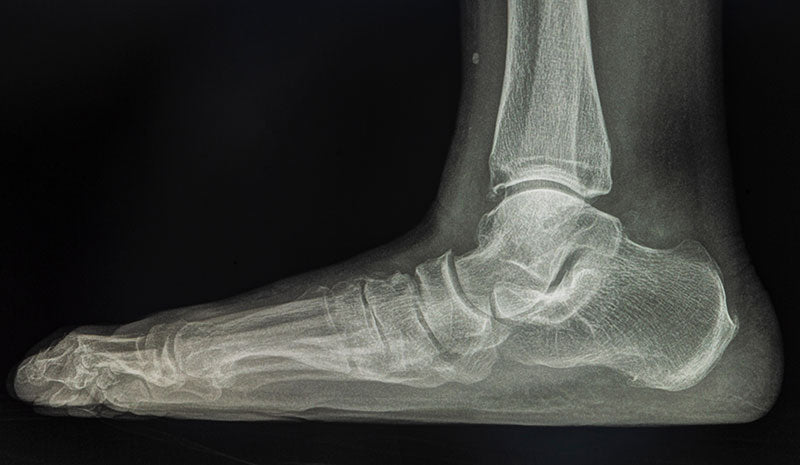
Flat Feet Treatment
Share
Feet that seem to have no arches and make contact with the ground at nearly every point across the bottom are known as flat feet. This is often a result of a loss of arch, sometimes called a collapsed arch, which is formed by tension in tendons of the foot, though sometimes it can be a result of anatomical differences at birth. Whatever the cause of the condition, having flat feet can be difficult and painful.

What causes flat feet?
A number of factors can contribute to arch collapse including obesity, aging, rheumatoid arthritis, diabetes, and even injury. If you are experiencing foot pain and suspect you are having issues maintaining your arch, it is important to see a doctor to get a proper diagnosis as many conditions of the foot can cause similar pain. If you exercise on a regular basis it will be important to rest as you seek a diagnosis because continued trauma to the area of pain may compound the problem.

What injuries are caused by flat feet?
People with flat feet report a range of symptoms from having no pain at all to experiencing pain in their heels, ankles, knees, back, or even hips. Flat feet have also been associated with symptoms like bunions and hammer toes. This makes sense if you think about how shoes are generally constructed for people with normal arches. Wearing ill-fitting shoes can cause bunions and hammer toes and people with flat feet might have a difficult time finding shoes that fit well. And as flat feet are a result of loss of arch which helps to keep the foot in an upright and stable position, it causes the ankles to leave their neutral position and roll inward. This can affect the alignment of your body from your ankles all the way up your spine to your neck.
How do you alleviate pain from flat feet?
The treatment for flat feet is dependent on the level to which the arches of the feet have collapsed. If you’ve got mild arch collapse and have seen a doctor, you might be able to relieve some of the pain or discomfort with rest, ice, and over-the-counter anti-inflammatory medications like ibuprofen or Motrin. If you are obese, losing weight may help to reduce the rate or arch collapse as well. If the pain is more advanced, you can try adding arch support to your shoes with shoe insoles. Many people find that the additional support from arch inserts are enough. However, if your case is severe and you cannot find relief any other way, your doctor may recommend surgery.

Do flat feet need arch support?
You might assume that all cases of flat feet would benefit from arch support. And while most adults do require some sort of arch support for flat feet, sometimes, usually in pediatric cases, arch supports are not recommended. The most important step to take is to see a doctor who can help you determine your best treatment path. If arches are recommended, there are a variety of options on the market and an expensive custom orthotic is not always necessary. Protalus M-Series insoles offer the most arch support out of the Protalus line of shoe inserts. They can be placed in most shoes without trimming and may be a good option for someone hoping to avoid the high cost of custom inserts.